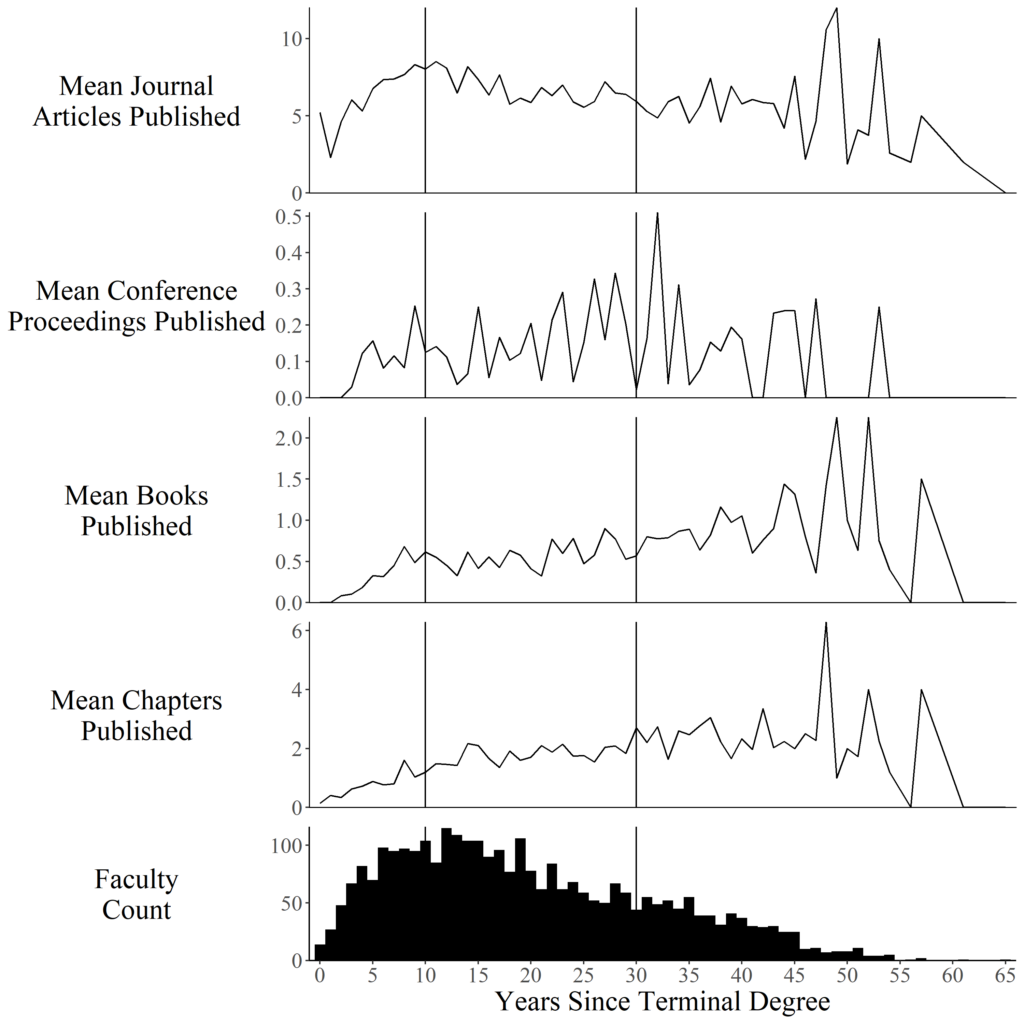It has been a busy year for the Academic Analytics Research Center. We’ve conducted webinar presentations and published the results of a handful of research projects, and we’ve also provided public access to the data resources underlying a position paper on the rhythms of scholarly publication. As we head into the fall season, we’re looking back at what we’ve learned as we examined the national research environment so far this year.
Are we too focused on journal articles?
First and foremost, each academic discipline has its own identity and dynamic. How scholars conduct research and report their results changes from one discipline to another. Many engineering disciplines favor publication of conference proceedings, while the physical, biological, and health sciences rely almost exclusively on the journal article. The social sciences and humanities, on the other hand, employ a mix of journal articles, book chapters, and books for the dissemination of research. The figure below shows examples of the wide variety of disciplinary publishing strategies (image source: 10.31235/osf.io/j8wec).

Career stage is related to publishing practices
Different segments of a discipline’s population make their own distinctive contributions to the research literature. We found that early career researchers are publishing more articles than previous generations and appear to be setting an example for their more senior colleagues, encouraging them to do the same. At the same time, we have also found that senior researchers consistently publish more books and book chapters than their junior colleagues. Drawing on their years of experience, senior scholars shift their research focus to the review and synthesis of ideas and contribute to their respective disciplines through the publication of books and book chapters, as seen in the figure below (figure source: 10.31235/osf.io/ves6g).

The mean number of scholarly outputs by academic age (years since terminal degree) in the field Anthropology. The histogram at the bottom shows the total population of scholars in this field by years since terminal degree. Vertical lines at 10 years and 30 years
The “quantification” of the social and behavioral sciences influences publishing patterns
Disciplines are evolving in response to changes in technology, knowledge creation and dissemination, and changes in the funding environment. With the advent of digital technology and the increasing importance of research through the quantitative exploration of massive databases, there has been a clear increase in journal article publication in the social science disciplines. At the same time, we also found that the influence of performance-based research assessment systems on faculty publishing and research decisions have contributed to a decline in the number of book publications, as seen in the figure below (figure source: 10.13140/RG.2.2.15989.29922).

Discipline population (blue dotted line), book publications (green line with triangles), and journal article publications (dashed line with circles) over time.
Disciplines have publishing rhythms – analytical timeframe matters
The tempo of research and publication varies from discipline to discipline. Some are fast; some are slow. Some require only months to see the impact of publication; others may require years. Thus, one’s choice of a comparative timeframe can have profound effects on cross disciplinary comparisons. This is particularly telling in the humanities. For example, we calculate that 81% of historians have published at least one book in the most recent 10-year period. However, looking at the most recent three years, only 42% of history faculty have authored a book. Clearly, a complete picture of disciplinary research activity requires a longer timeframe (publication rate data over different timeframes is available for all disciplines at: 10.17605/OSF.IO/MYAUT).
In all, we have gained an appreciation of national research activity as a kaleidoscope of research and publishing practices, each discipline requiring that it be understood and assessed on its own terms. A multiplicity of approaches to the creation of knowledge and dissemination of research results provides the greatest opportunities to gather rich observations about the complex world we live in.






Leave A Comment